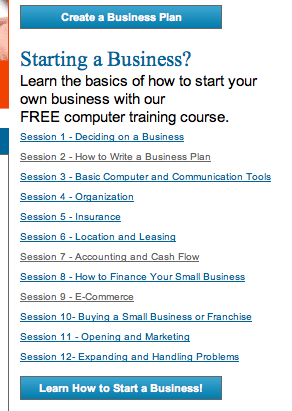Editor's Choice, March 2012: unbeatable tools to help entrepreneurs develop their business
This month I have selected two excellent contrasting toolboxes for entrepreneurs. One, more conventional, covers the essentials to start and run operations: business plans, insurance, accounting and cash flow. The other provides tools and building blocks for ‘entrepreneurial spirits’ to revamp their business model.
The SME Toolkit of the International Finance Corporation (IFC) is hard to beat as a tool for small and medium business, needing a hand with any of the basics of running a good business. Whether you need steps to write a business plan or explanation of different accounting elements, it it all there and clear. It even has 93 free downloadable template forms: balance sheet template, sample emergency procedures, employee grievance form and many more.
Beyond the basics, there is also much more: website tools, regular blogs, and case study examples. The Toolkit is available in many languages and has a mobile app too. It is ideal for an informal business that needs to upgrade and formalise - which is the case for some inclusive businesses we support. It’s also useful for large business who are supporting their SME suppliers to grow as they develop inclusive supply chains.
Business Model Generation is totally different in tone, style and content. It’s not about how to run a business, but how to create a business model that delivers. It provokes and engages entrepreneurs, with hand-drawn sketches, a canvas for you to map out your business, and a fresh approach.
Nine building blocks provide the central elements of the canvas: customer segment, value proposition, channels, customer relationship, revenue stream, resources, activities, partnerhsips and cost structure. The handbook then helps the entrepreneur map out the canvas, and develop the strategy around it. As Ruth Branvall has argued, this approach helps us avoid the mistake of thinking that ‘business’ model is just about where the revenue stems from.
Business Model Generation website provides links to purchase the book, a free download of 70 pages, links to an Ipad app, and notification of the web version coming soon, plus more. It is not targeted at developing countries, but is targeted at innovators, so is ideal for inclusive business entrepreneurs. And it is most definitely different to the conventional business planning menus likely to be available at present in many developing (and developed) country business guides.
In engaging with scores of inclusive businesses in the Business Innovation Facility and Innovations Against Poverty, we have found that many are focused on getting the business model right, whether it is a start-up business, an NGO programme turning into a business, or a multinational developing a new product stream that engages low income segments. These two guide have starkly contrasting styles, but both offer rich content and easy step-by-step guidance to help entrepreneurs of the kind supported by BIF and IAP.

